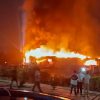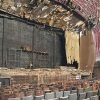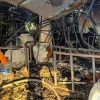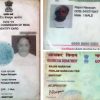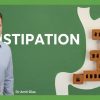Goa is abuzz with excitement as vintage bike and car owners, users, collectors and fans are decking […]
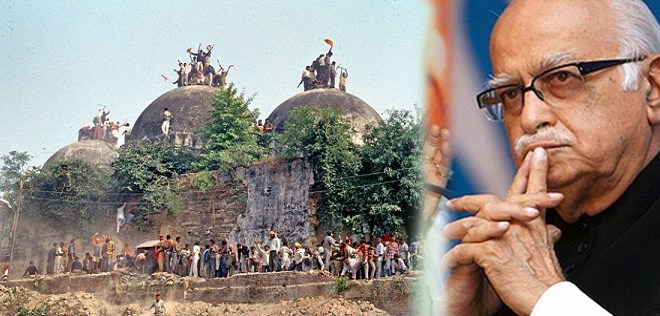
BJP BACK IN DOCK
April 29- May 05 2017, Cover Story April 29, 2017ACCUSED: The SC has revived the charge of criminal conspiracy in the demolition of Babri Masjid by the patriarch of the Sangh Parivar, LK Advani, in 1992. Indeed it was Advani who started the movement to build the Ram Temple on the ruins of the Babri Masjid
In an action replay of the Supreme Court verdict on the Sasikala case, the future of the Modi government will depend on whether the district court completes the probe into the charge of conspiracy against senior Bhartiya Janata Party leaders, LK Advani, Murli Manohar Joshi and Uma Bharti within the deadline of two years. Allowing the appeal of the CBI to revive of criminal conspiracy against the top BJP leaders for the demolition of the Babri masjid, the Supreme Court has directed that the trial should be over in two years or by 2019, which is when Modi will be seeking a fresh mandate
By Rajan Narayan
THE wheels of justice grind very slowly but surely. We have seen this in many cases, the most recent being the reversal of the high court order acquitting Jayalalithaa and her close companion Sasikala of the corruption charges against them. Jayalalithaa may have escaped due to her tragic death at the height of power, but her companion who was all set to step into her shoes, is in a Bangalore jail, serving the rest of a four year sentence. It is now the turn of LK Advani, Manohar Joshi, and Uma Bharti, who cheered while the kar sevaks demolished the Babri Masjid on December 6, 1998, sparking a vicious cycle of violence starting from the Godra incident, to the post Godra riots, to the bomb blasts in Mumbai, and the growth of terrorism both Hindu and Muslim.
BABRI DEMOLITION
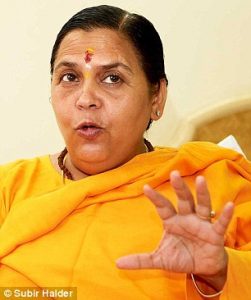
UNREPENTANT: Senior Sangh Parivar leader, Uma Bharti, who is a minister in the Narendra Modi cabinet has also been charged with criminal conspiracy in the demolition if the Babri Masjid. Unlike Advani she has not only admitted to the crime but is proud of it
THANK Ram that there is at least one institution in the country which continues to be independent. The Central Bureau of Investigation (CBI) had challenged the order of the Allahabad High Court which upheld the district court verdict absolving LK Advani and other Bharatiya Janata Party (BJP) leaders of conspiracy charges. The CBI under the direction of the Modi government had tried to withdraw the cases against the top BJP leaders including LK Advani, Murli Manohar Joshi and the then chief minister Kalyan Singh.
The Supreme Court stood firm, adopting a tough stance “let justice be done though the heavens fall”. The Supreme Court accepted the appeal of the CBI and ordered the framing of criminal conspiracy charges in four weeks time. The trial court has been directed to hear the case on a day to day basis and complete the hearing within a maximum period of two years. The Supreme Court has also made it clear that there will be no adjournment and the judge hearing the case shall not be transferred for the period of the trial. The other main culprit Kalyan Singh who was the chief minister when the Babri Masjid was demolished has got temporary relief as he is now the Governor of Rajasthan.
JUDAS KALYAN
NOT only is the Supreme Court judgement a vindication of the faith of the people in democracy, it will go a long way in reassuring the Muslim and Christian minority communities which have become the target of the Modi government. It will also prevent the lunatics and the fanatics of the Sangh Parivar including Yogi Aditiyanath from building a Ram temple on the site of the demolition of the Babri Masjid mosque. Kalyan Singh should be hauled up for contempt of court by the Supreme Court as the apex bench had not issued any order on fears of demolition of the mosque due to the assurance given by the then chief minister of Uttar Pradesh, Kalyan Singh.
Kaidi no 1 is definitely LK Advani who started the Rath Yatra in 1998 after the miserable performance of the BJP in the parliament elections where it got only three seats. The Rath Yatra started, not surprisingly, from Modi-land Gujarat. The sole purpose of the Rath Yatra was to polarise the country along communal lines and encourage millions of youth all over the country to demolish the Babri Masjid to build a temple of Ram in its place. The claim is that the Babri Masjid, which was reportedly built by the emperor Babur, was built on the land on which a temple stood. Indeed the BJP bhakts claim that the very spot where the Masjid was built was the birth place of lord Ram. There has been no evidence produced by either side on Ayodhya being the birth place of lord Ram or the Babri Masjid having been built by Babur. The situation is complicated by fact that there is a small temple of Ram within the Babri Masjid.
‘RAM’ BRICKS
THE Advani Rath Yatra marched or drove all over the country from state to state inciting young people to make bricks inscribed with Ram’s name and gather at Ayodhya to demolish the Babri Masjid and replace it with the Ram temple. The madness spread even to Goa. I remembered visiting a Sangh Parivar factory in Bicholim where bricks were being made for the Ram Mandir. A large delegation from Goa, which may have included Manohar Parrikar, was present in Ayodhya when the Babri Masjid was demolished in the presence of not only the national, but inter-national media.
There was high drama just before the demolition of Babri Masjid which followed hate filled speeches by Uma Bharti and the VHP leaders. All the top BJP leaders including LK Advani and Joshi were present. It was clear that the mob was in a violent mood and had come prepared to demolish the Masjid. Frantic calls were made to the then Congress prime minister Narsimha Rao who had succeeded Rajiv Gandhi after the latter was assassinated in Tamil Nadu by the LTTE. The Supreme Court was moved by the minority Muslim community. The Supreme Court did not issue any direction on the assurance by the UP chief minister that the Babri Masjid would be protected. However, not only did Kalyan Singh fail to protect the Masjid, he actually ensured that the police did not interfere with the kar sevaks. There was not even a lathi charge, let alone tear gas shells to disperse the crowd. Concerned journalists who were also attacked by the bhakts called up the Prime Minister. Like Emperor Nero, who is said to have fiddled while Rome burnt, Narsimha Rao put his phone off the hook and everyone was told that he was busy performing a pooja when the demolition took place. He reacted only after the Babri Masjid was totally destroyed.
VIOLENT SEQUENCE
THE demolition of Babri Masjid set off a cycle of communal violence in the country which was supported by all Hindutva elements including those in the Congress party. It began with an incident in which a compartment of a train which was bringing kar sevaks back from Ayodhya caught fire in Godhra. The rumours was spread that the Muslims had deliberately attacked the kar sevaks. Modi, who has been called the butcher of Gujarat, let lose the Sangh Parivar fanatics to target the Muslim community all over the state. Even a Muslim member of parliament and his family were not spread. Women with newly born children were butchered by Modi goons. In fact soon after Godhra there was a meeting of the national executive of the BJP in Goa. Atal Bihari Vajpayee who by then had become the head of the first BJP government at the Centre wanted Modi to be dismissed. I recall being at a dinner for Prime Minister Vajpayee at the Raj Bhavan in Goa where Vajpayee told the media that Modi had not performed the raj dharma which according to Vajpayee meant protecting all the kingdom, irrespective of their religion, caste, or creed. But the hard liners, including host Parrikar, prevailed and the butcher was allowed to continue as the chief minister of Gujarat. The butcher of Gujarat has now become the prime minister of the country.
The post Godhra riots where Muslims were killed were followed by the terrorist attacks on Bombay allegedly planned by Dawood Ibrahim. Several leading landmarks of Bombay like the stock exchange, the Centaur hotel and even the airport came under attack. This was like the 2011 New York attack where terrorists crashed a plane into the world trade centre towers claiming over 500 lives. In response to the bombing of buildings in Bombay the Shiv Sena started attacking the minority Muslim community. When a group of Muslims approached the then Maharashtra chief minister he told then he was helpless and that they should go to Bal Thackeray the Shiv Sena Chief.
The new combine of Amit Shah and Narendra Modi are far more dangerous than LK Advani and Murli Manohar Joshi. They belong to the same gang as Uma Bharti who has declared that she is proud of being part of the demolition of the Masjid and is ready to go to jail. Among the fanatics who took part in the demolition of the Babri Masjid was Vinay Katiyar, who was in the news earlier this year for his sexist comments about Priyanka Gandhi’s appearance. When asked whether ‘star campaigner’ Gandhi would draw votes for the Congress in the upcoming UP elections he dismissed her saying there are many other more beautiful women campaigners.
For a while the Supreme Court gave the impression that it was soft on Hindutva. It suggested that the various communities should come together to solve the problem of the Ram Mandir which has been pending in court for more than 100 years. But while the Supreme Court may have suggested discussion on Ram Mandir it has made it clear that it will not allow Narendra Modi and Yogi Aditiyanath to build a Ram Mandir against the will of the huge minority Muslim community in the state. Given that it has ordered that the trial must be finished by 2019, the outcome will have an impact on the 2019 parliamentary election when Narendra Modi will be seeking the mandate to continue as the prime minister of the county.
SC JUDGMENT DETAILS
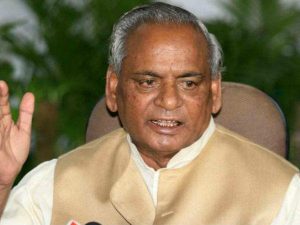
IMMUNITY: Lalyan Singh has got a reprieve from the trail as at present he is the governor of Rajasthan. The moment he steps down he will also be in dock. he was the CM of UP and had assured the SC that he would not permit the demolition of the Babri Masjid.
THE Supreme Court on Wednesday said the Babri Masjid demolition is a crime that shakes the secular fabric of the constitution and ordered the restoration of ‘criminal conspiracy’ charges against senior BJP leaders L.K. Advani, Murli Manohar Joshi and Uma Bharti. It also ordered a joint trial in the Lucknow court where the trial of others for the same crime is taking place and directed that the proceedings be completed in two years. The Babri demolition trial has so far been taking place in two courts: one in Lucknow (for the ordinary kar sevaks) and one in Rae Bareli (for the leaders).
Advani, who was deputy prime minister of India and remains today an iconic leader of the Bharatiya Janata Party, would not have imagined that the 1992 Babri Masjid demolition case will haunt him again after nearly 25 years, in a verdict with strong political ramifications.
A bench of Justices Pinaki Chandra Ghose and Rohinton Nariman gave this direction to the CBI while allowing its appeals filed in 2011 during the UPA regime against the dropping of conspiracy charges against Advani and others in the case. Advani and his co-accused will be sentenced upto five years imprisonment if the conspiracy charge is proved. Curiously, the CBI under the BJP-led NDA dispensation vigorously pursued the appeals and pressed for a joint trial in one court with the conspiracy charge restored.
Writing the judgment, Justice Nariman said, “in the present case, crimes that shake the secular fabric of the constitution have allegedly been committed almost 25 years ago. The accused persons have not been brought to book largely because of the conduct of the CBI in not pursuing the prosecution of the aforesaid alleged offenders in a joint trial, and because of technical defects which were easily curable, but which were not cured by the Uttar Pradesh government.”
TEMPORARY RELIEF
THE bench said one of the accused, Kalyan Singh, will benefit from constitutional immunity as he is currently the governor of Rajasthan. The court further said that as soon as he relinquishes office, additional charges of conspiracy shall be filed against him. Invoking its powers under Article 142 of the constitution to do complete justice, the bench shifted the proceedings from the Rae Bareli court (pending against Advani and others) to a Lucknow court.
Rejecting Advani’s submission that the trial cannot be shifted as his right to a fair trial, under Article 21 of the constitution, would been taken away, the bench said “almost 25 years have gone and yet we are solemnly reminded that fundamental rights should not be curtailed by any order passed under Article 142. Article 142 can be used for a procedural purpose, namely, to transfer a proceeding from one court to another.”
The court said it “can go to the extent of relaxing the application of law to the parties or exempting altogether the parties from the rigours of the law in view of the peculiar facts and circumstances of the case. This being so, it is clear that this court has the power, nay, the duty to do complete justice in a case when found necessary.”
Once the case is shifted to Lucknow, the court of sessions will frame within four weeks an additional charge under Section 120-B against Advani, Vinay Katiyar, Bharati, Sadhvi Ritambara, Joshi and Vishnu Hari Dalmia, Champat Rai Bansal, Satish Pradhan, Dharam Das, Mahant Nritya Gopal Das, Mahamadleshwar Jagdish Muni, Ram Bilas Vadanti, Vaikunth Lal Sharma (Prem) and Satish Chandra Nagar.
The bench said there won’t be a fresh trial. In its judgment, the court has ordered a day to day trial without any adjournments, no transfer of the presiding judge, and that the CBI shall ensure some prosecution witnesses remain present every day. The court also said that the case will not be adjourned on any ground other than when the sessions court finds it impossible to carry out the trial on a particular date.
So far, 195 witnesses have been examined in the Lucknow case while a whopping 800 witnesses remain to testify. In the Rae Bareli case, 57 witnesses have been examined while 105 are yet to be examined. Now, there will be fresh examinations of witnesses in the Lucknow court in the joint trial where the CBI has filed a composite chargesheet, inclusive of the conspiracy charge.
Justifying the joint trial, the bench said that since the evidence for all these offences was almost the same, the offences cannot be separated from each other, irrespective of the fact that 49 different FIRs were lodged. The bench agreed with the CBI that “the offence of criminal conspiracy is already there in the joint charge sheet filed by the CBI against all the named accused, which includes the 21 accused who have been discharged. That being the case, it is clear that the said accused could not possibly have been discharged.”
The bench also faulted the Allahabad High Court in dropping the conspiracy charge. “In our opinion, there is no need for a de novo trial inasmuch as the aforesaid charges against all 21 accused persons can conveniently be added under Section 216 of the Code of Criminal Procedure in the ongoing trial. No prejudice will be caused to the accused as they have the right to recall witnesses already examined either in Rae Bareily or in Lucknow for the purpose of cross- examination.”
TRIAL Background
SOON after the demolition of the Babri Masjid on December 6, 1992, two FIRs were registered – 197/92 (without naming the kar sevaks and later naming 47 accused) and 198/92 (against Advani and 12 others). The special court framed charges against 47
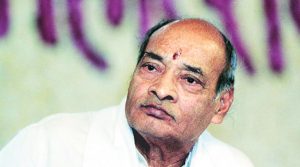
DEFULT: The then PM Narsimha Rao, is guilty by default as he did not take any steps to prevent the demolition of the Babri Masjid. He claimed to be doing a pooja when the masjid was being brought down by the kar sevarks.
persons in the first FIR, and Advani and others in the second FIR, which dealt with the actual demolition of the masjid.
The first mentioned serious offences, including robbery or dacoity with attempt to commit murder, causing hurt by an act endangering life or safety of others, deterring public servants from doing duty and promoting enmity between different religious groups.
The second FIR, was registered against 12 persons, including Ashok Singhal, Giriraj Kishore, Advani, Joshi, Dalmia,Vinay Katiyar, Bharati and Ritambara, who were on the dais at Ram Katha Kunj when the masjid was being demolished. They were accused of promoting enmity, making imputations and assertions prejudicial to national integration and statements conducive to public mischief.
On revision, the sessions judge on May 4, 2001, dropped the conspiracy charge against Advani and others on the ground that case number 197, was transferred to the CBI, related only to kar sevaks. Nine years later, the Allahabad High Court on May 20, 2010, upheld the special court’s order and dismissed the CBI’s revision petition for a direction to proceed with the conspiracy charge against Advani and others.
The high court had pointed out that the notification for transfer mentioned only one FIR against the kar sevaks. The high court said it was open to the state government to issue a fresh notification for transfer of both FIRs but the then state government failed to issue a fresh notification for a composite trial. The CBI filed the appeal nearly nine months after the high court verdict, with an application for condonation of delay.
The CBI contended that the persons who had indulged in the actual demolition should be tried in case 197 along with the offences relating to snatching of cameras and assault of media persons. The CBI contended that the bifurcation attempted by the trial court and approved by the high court was completely erroneous in law.
It said the offence of instigation, facilitation, the actual demolition of the mosque on December 6 and the continuous assault on the media persons form a single connected transaction, and might also be a concerted conspiracy under Section 120B of the IPC.
The CBI said the error in the judgments of the trial court and the high court had vitiated the fundamental principles of criminal jurisprudence that in respect of a continuous criminal act which might attract various offences of the IPC, the said transaction had to be viewed as a whole. Advani and others in their response blamed the UPA government for filing the appeal after a considerable delay and said it was purely a political agenda, but the CBI stuck to its stand for revival of conspiracy and succeeded in its attempt.
CHRONOLOGY OF EVENTS
■ 1528: A mosque is built on the site by Mughal emperor Babar which Hindus allege to be the birth place of Lord Ram where a temple earlier existed.
■ 1853: First recorded incidents of communal violence at the disputed site take place.
■ 1859: British officials erect a fence to separate the places of worships, allowing the inner court to be used by Muslims and the outer by Hindus.
■ 1949: Idol of Lord Ram surfaces inside the mosque. Muslims claim Hindus kept it there. Both parties file civil suits. The government proclaims the premises a disputed area and locks the gates.
■ January 18, 1950: First title suit is filed by Gopal Singh Visharad asking for the right to worship the idols installed at ‘Asthan Janmabhoomi´. The court restrained the removal of idols and allowed the worship to continue.
■ April 24, 1950: The State of Uttar Pradesh (UP)appealed against the injunction order.
■ 1950: Ramchandra Paramhans files another suit, but withdraws it later.
■ 1959: Nirmohi Akhara enters the fray and files the third suit. It claims itself to be the custodian of the spot at which Ram was supposedly born.
■ December 18, 1961: UP Sunni Central Board of Waqfs moves in to claim possession of the mosque and adjoining land.
■ 1986: On a plea of Hari Shanker Dubey, a district judge directs Masjid gates to be unlocked to allow ‘darshan’. Muslims set up Babri Masjid Action Committee.
■ 1989: Fresh suit filed by former VHP vice-president Deoki Nandan Agarwala in the name of Lord Ram for declaration of the title and possession in its favour at the Lucknow bench of the Allahabad HC.
■ October 23, 1989: All the four suits, pending before a Faizabad court transferred to a special bench of the HC.
■ 1989: VHP lays foundations of a Ram temple on land adjacent to the disputed mosque.
■ 1990: VHP volunteers partially damage the mosque. Prime Minister Chandra Shekhar tries to resolve the dispute through negotiations, which fail the next year.
■ 1991: BJP comes to power in UP with Kalyan Singh as CM.
■ December 6, 1992: Babri mosque torn down by supporters of the VHP, the Shiv Sena and the BJP, prompting nationwide communal riots between Hindus and Muslims in which more than 2,000 people die.
■ October 1993: CBI files composite charge sheet accusing Advani and others of conspiracy.
■ December 1993: Two FIRs filed in the case. One against unknown kar sevaks for demolition of the mosque. The other named BJP leaders Advani, Murli Manohar Joshi and others for allegedly giving ‘communal’ speeches before demolition.
■ May 4, 2001: Special CBI court drops proceedings against Advani, Joshi, Uma Bharti, Bal Thackeray and others.
■ January 2002: Archaeologists begin a Allahabad HC-ordered survey to find out whether a temple to Lord Ram did exist on the site. PM Vajpayee appoints Shatrughna Singh to hold talks with Hindu and Muslim leaders.
■ February 2002: VHP confirms deadline of 15 March to begin construction. Hundreds of volunteers converge on site. Meanwhile, at least 58 people are killed in an attack on a train in Godhra which was carrying Hindu activists returning from Ayodhya. This leads to the infamous Godhra riots.
■ April 2002: Three HC judges begin hearings on determining who owns the religious site.
■ August 31, 2003: All India Muslim Personal Law Board challenges the ASI report that said there is evidence of a temple beneath the mosque. Vajpayee says at the funeral of Hindu activist Ramchandra Das Paramhans that he will fulfil the dying man’s wishes and build a temple at Ayodhya. However, he hopes courts and negotiations will resolve the issue.
■ September 2003: A court rules that seven Hindu leaders should stand trial for inciting the destruction of the Babri Mosque, but no charges are brought against Advani, then deputy prime minister, who was also at the site in 1992.
■ November 2, 2004: CBI appears before the Lucknow bench of the Allahabad HC, challenging the dropping of proceedings against BJP leaders on technical grounds. Court issues notices.
■ June 2009: The Liberhan commission investigating events leading up to the mosque’s demolition submits its report – 17 years after it began its inquiry. Its contents are not made public.
■ May 20, 2010: HC dismisses plea. Says no merit in CBI’s revision petition.
■ July 2010: Bench reserves its judgement and asks all parties to solve the issue amicably. No one is keen.
■ September 30, 2010: Allahabad HC pronounces judgment on the 60- year-old title suit. Disputed land to be split into three parts. Ramlala idol site to go to the party representing Ram Lalla Virajman, Nirmohi Akhara to get Sita Rasoi and Ram Chabutara, and the Sunni Wakf Board to get the rest. Status quo to be maintained for three months.
■ December 2010: The Akhil Bharatiya Hindu Mahasabha and Sunni Waqf Board move the SC, contesting part of the Allahabad HC’s verdict.
■ February 2011: CBI moves SC against HC order of May 20, 2010.
■ May 2011: The SC stays the HC order of September 2010 and saying that status quo will remain in place.
■ September 3, 2013: SC advanced the date of hearing by about two months in the Babri Masjid demolition case against L.K. Advani and 19 others after the CBI plea for an early hearing was not opposed by senior BJP leaders.
■ March 31, 2015: SC issues notices to senior BJP leaders, including Advani, Joshi, Uma Bharati and Kalyan Singh, on a plea not to drop charges of criminal conspiracy against them in the Babri Masjid demolition case.
■ March 6, 2017: SC indicates it may consider reviving conspiracy charge against the BJP leaders in Babri Masjid demolition case.
■ April 6, 2017: SC favours time-bound completion of trial in the case and reserves order on CBI’s plea.
■ April 19, 2017: SC restores criminal conspiracy charge against leaders including Advani, Joshi and Union cabinet minister Uma Bharti in the case and clubs the trials of VIPs and kar sevaks.

